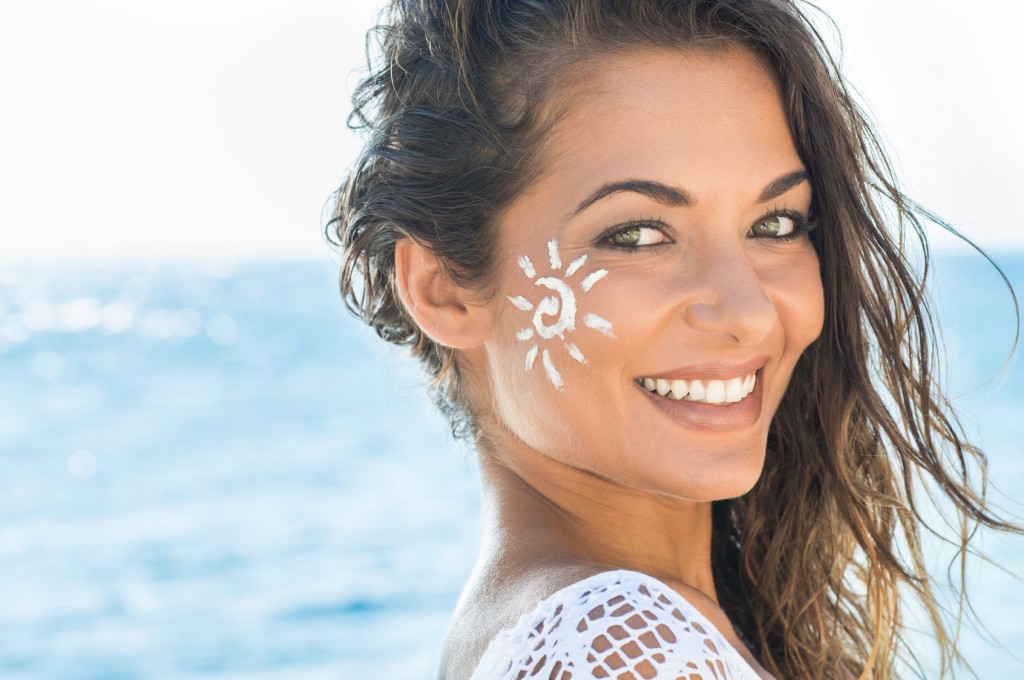STOP to dry skin in the summer! How to moisturise the skin after sunbathing?
 Brown skin with a golden shade is a positive tanning effect. Unfortunately, there are also negative effects of long sunbaths without proper protection, eg irritation and loss of hydration. How to moisturize the skin after tanning?
Brown skin with a golden shade is a positive tanning effect. Unfortunately, there are also negative effects of long sunbaths without proper protection, eg irritation and loss of hydration. How to moisturize the skin after tanning?
Women especially love tanning. The warm rays of the sun that touch the skin bring us into a pleasant state of relaxation and give the skin a beautiful shade. Sunbaths have many advantages, but unfortunately also as many downsides. UV radiation, which is definitely more dangerous in the summer, has a harmful effect on our skin – it not only accelerates photoaging but also dehydrates the skin making it rough and matte. It is necessary to intensively moisturize it after every descent from the sun exposure. How to moisturize the skin after tanning?
Moisturizing the skin from the inside
Our body needs constant hydration. Water is needed not only to maintain the basic functionality of the body, but also affects the condition of our hair, nails and, of course, the skin. Especially in the summer, we should remember about the regular drinking of water, thanks to which we will supplement its shortages caused by the sun.
It is worth remembering that hydrating the skin from the inside is not the only way. It is not enough to drink a lot of water to have a well-hydrated skin in the summer. It is necessary to act from the outside as well.
Strongly moisturizing creams – what should they contain?
Moisturizing the skin after sunbathing is easier if you reach for the right cosmetics. A good cream or body lotion for the summer should have a light texture. It has to gently coat the skin with a moisturizing layer, instead of weighing it down or leaving a greasy and sticky layer. If you want your post-sun cream to soothe irritations, moisturize, smooth the skin and prevent it from peeling, extending the durability of the tan, it must contain certain ingredients, such as:
• urea – it is naturally found in our skin, acting as a substance maintaining the proper level of hydration, softness and elasticity; it also has anti-inflammatory and antibacterial properties, so it soothes irritations; wonderfully moisturizes, nourishes and regenerates;
• hyaluronic acid – it has the ability to combine collagen fibres and water molecules, thanks to which it is easier to maintain skin firmness, a proper level of hydration and vitality; it brings relief to sunburns and minimizes the effects of photoaging of the skin;
• allantoin – a skin regenerating substance obtained from common comfrey which stimulates faster cell division and also has an anti-inflammatory effect; not only reduces redness and soothes irritation, it also intensely moisturizes, soothes and regenerates;
• d-panthenol – pro-vitamin B5, which belongs to the group of humectants – substances responsible for moisturizing; it occurs naturally in the skin, preventing its roughness, flakiness and loss of hydration provides anti-inflammatory and soothing qualities;
• aloe vera extract – tanning cosmetics are often enriched with aloe extract, which penetrates deep into the skin, bringing immediate relief, moisturizing, soothing irritation and working as an antioxidant;
• vitamins A, C and E – are antioxidants that neutralize the action of free radicals and inhibit the process of photo-ageing, it’s worth looking for these and other vitamins in post-sun creams, which is what the skin needs after sun exposure;
• vegetable oils – these are natural sunscreens, which are worth looking for in post-sun cosmetics because oils also include additional properties: they prevent the loss of moisture, give the skin shine and softness, promote regeneration and care.
Time for regeneration – post-sun skin treatment
After sunbathing, it is worth reaching for skin-regenerating masks, eg with coenzyme Q10 or plant extracts, eg borage. A good post-sun mask will bring relief, stimulate the regeneration process, strengthen the collagen fibers and prevent ageing of the skin. Masks usually have a very thick consistency and can be more oily and rich than moisturizing balms. That’s good because they are to protect the skin and prevent the negative effects of tanning.
Warning! Do not use regenerative masks immediately after leaving the sun. First, it’s better to use a moisturizing cream and apply the mask the next day.
Homemade methods for red skin after tanning
How to moisturize the skin after tanning? Not necessarily with just cosmetics. You will find products that allow you not just to alleviate irritation, but also to prevent loss of hydration and nourish the skin in almost every home. The best at-home remedies for moisturizing the skin after tanning include:
• cold wraps made with milk, buttermilk, yoghurt,
• a mist made of mineral water and cucumber juice,
• bath in water with whole milk, oil and honey,
• cold water with apple vinegar.

Say Goodbye to Clumps: 5 Mascaras That Truly Deliver Stunning Lashes
Tired of mascaras that promise volume but end up ruining your makeup by mid-day? You’re...
Revive and Illuminate Your Eyes: Discover the Comfort of Nanolash Collagen Eye Patches
In the fast-paced rhythm of everyday life, the eyes rarely get a moment of rest. Late nights,...